F5 ADC 3.0 drives enterprise intelligent transformation with innovative application delivery in the AI era Original
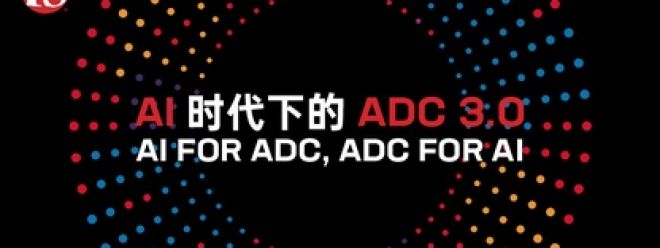
The explosion of AI technology has not only changed the business model, but also completely overturned the way applications are built and delivered. At a time when generative AI has set off a global technological revolution, enterprise application architecture is undergoing a paradigm shift from "function-driven" to "intelligence-driven". Faced with the computing power flood of large model training and reasoning, the security threats brought about by the API economy, and the operation and maintenance challenges of distributed architecture, the technical boundaries of traditional application delivery controllers (ADCs) need to be broken through.
Recently, F5 launched the ADC 3.0 concept in the AI era. Through the strategy of "two-way empowerment" (AI for ADC, ADC for AI), it redefines the boundaries of application delivery and provides a new foundation for the digital transformation of enterprises. 51CTO interviewed Chen Liang, General Manager of Products and Solutions of F5 China, and gave a detailed interpretation of the concept of [ADC 3.0 in the AI era].
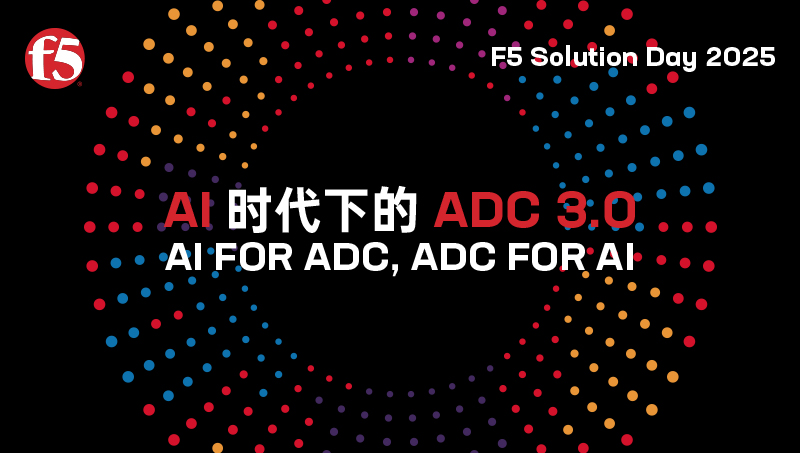
AI applications drive technology architecture change
According to Gartner's forecast, by 2026, more than 80% of enterprises will use generative AI APIs or models, or deploy generative AI-enabled applications in relevant production environments. The popularity of AI technology has given rise to a new application paradigm. Chen Liang pointed out that with the explosive popularity of ChatGPT, the world has officially entered the AI era, and AI applications have shown four major characteristics in this context.
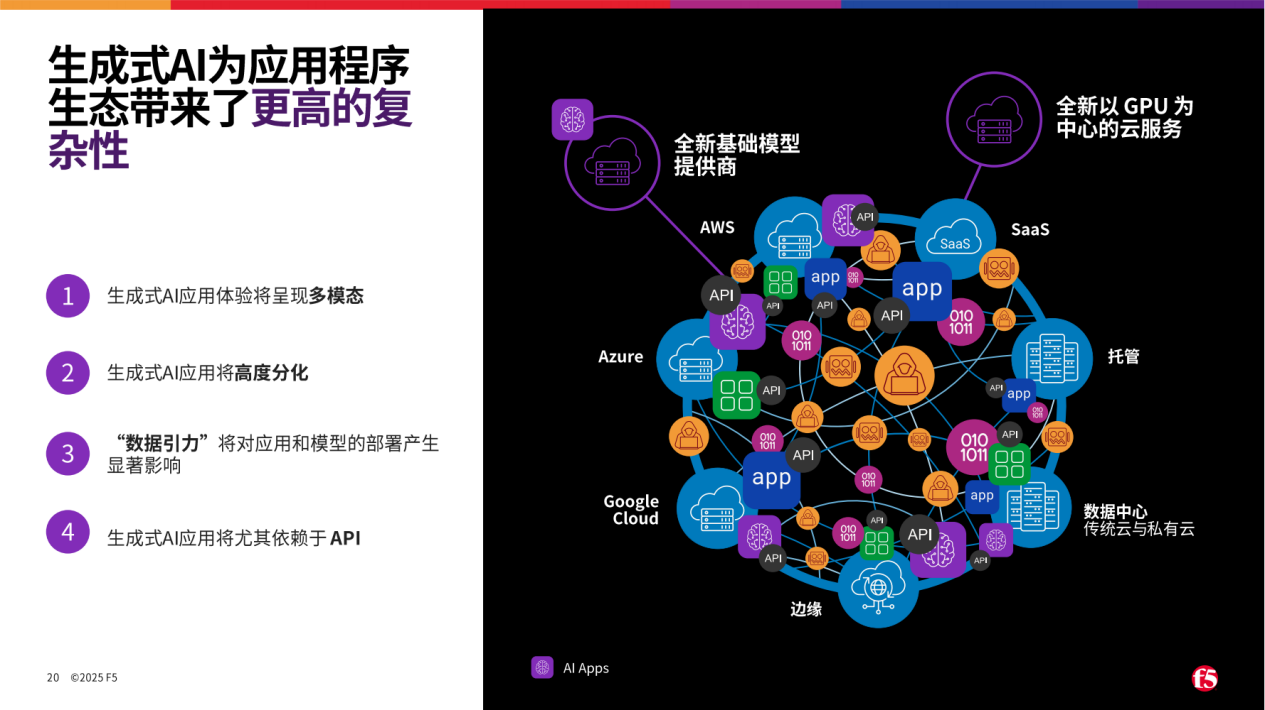
First of all, AI applications are the most modern applications. In terms of deployment methods, they will adopt microservices and containerization models, which enables AI applications to have the characteristics of rapid iteration and migration flexibility, allowing enterprises to quickly respond to market changes and continuously optimize and upgrade AI services.
Secondly, AI applications present a distributed deployment model. Due to their reliance on data gravity and energy gravity, AI applications need to be deployed in multiple geographical locations in order to more efficiently process user requests. The distributed model not only improves the response speed of AI applications, but also enhances their reliability and scalability.
Third, the access methods and access content of AI applications have also changed. The request method of traditional applications is mainly HTTP or HTTPS. In the AI era, most requests are completed through APIs. Although the data packets of API requests are small, the content they carry is extremely rich. In addition, AI applications also enable users to communicate with AI in a more natural and intuitive way through the interactive method of prompt words.
Fourth, AI applications place higher demands on data transmission and processing capabilities. AI applications need to process massive amounts of data and perform complex operations such as training, fine-tuning, and vectorization. These operations are not only large in data volume, but also computationally intensive, posing a huge challenge to the computing resources of the backend server. Therefore, how to process this data efficiently and securely has become a problem that must be solved in the process of AI application implementation.
In order to meet the challenges brought by AI applications, F5 innovatively proposed the concept of ADC 3.0. Through technological innovation, it redefined the boundaries of application delivery and provided efficient, secure, and intelligent support for enterprise AI applications.
F5 ADC 3.0's solution
In the era of artificial intelligence, application delivery and security face new challenges. ADC 3.0 solves the key pain points of IT environments in the AI era: complexity, inconsistency, inflexibility, and lack of visibility. ADC 3.0 redefines the functional positioning and development direction of ADC by deeply integrating high-performance load balancing, application delivery, Web applications, and API network security functions.
Compared with traditional ADC, ADC 3.0 in the AI era exhibits four major characteristics and six key capability breakthroughs, which together constitute its core competitiveness.
First, ADC 3.0 incorporates AI capabilities, making ADC easier to use. The built-in AI assistant significantly reduces the difficulty of configuring ADC policies, and can accurately identify attack risks from traffic and dynamically generate protection policies, reducing the complexity of the operation and maintenance process.
Secondly, ADC 3.0 breaks the limitations of traditional hardware deployment and achieves comprehensive coverage from data center to edge and then to cloud native, better adapting to application requirements in different scenarios.
Third, ADC 3.0 has also achieved a major breakthrough in capability expansion. It can not only identify traditional network protocols, but also deeply analyze API protocols, identify API risks, and understand the information of AI prompt words to make intelligent routing decisions, ensuring the efficient operation of AI applications.
Fourth, ADC 3.0 also performs well in terms of performance. It has high-performance, stable and fast transmission capabilities, which can ensure uninterrupted data transmission and processing, and provide strong guarantee for the continuous operation of AI applications.
Chen Liang pointed out that it is precisely with these four characteristics that ADC 3.0 can truly and effectively help enterprises’ AI applications to be quickly implemented and used safely.
Faced with the rapid development of generative AI, the demand for ADC is also changing. Therefore, during the development of ADC 3.0, F5 paid special attention to improving the capabilities in six aspects.
First, it provides more complete application delivery and security service capabilities. ADC 3.0 not only ensures the reliability, security, and scalability of application delivery, but also provides powerful identification and prevention capabilities for new security threats.
The second is to achieve diversified deployment of products. Whether it is a data center, cloud, edge, container or smart network card, ADC 3.0 can be flexibly deployed to meet the application needs in different scenarios.
The third is to provide a unified strategy and unified management platform. In response to the management challenges brought by the distributed deployment model, ADC 3.0 provides customers with a unified strategy and unified management platform, thereby simplifying the administrator's workflow and improving management efficiency.
Fourth, enhance data observation and collection capabilities. ADC 3.0 uses rich data observation and collection capabilities, combined with AI technology for processing, processing and analysis, to provide customers with a unified view and early warning analysis of possible future traffic or security risks and changes in background resource pressure.
Fifth, it has programmable capabilities. In order to cope with sudden changes in customer needs, ADC 3.0 is equipped with programmable capabilities on each product, allowing customers to carry out customized development according to their own needs.
Sixth, it realizes automation throughout the entire life cycle. ADC 3.0 takes API priority as its principle and opens all capabilities to third-party management platforms through API interfaces. With the rapid iteration of AI applications, ADC strategies can also be adjusted and optimized in a timely manner to ensure the security and efficiency of AI applications.
AI and ADC enablement
Chen Liang said that ADC 3.0 in the AI era has two cores, namely AI for ADC and ADC for AI. AI should be able to empower ADC and effectively improve the capabilities of ADC; at the same time, ADC should be able to provide AI with the reliability and security of corresponding services. Through "two-way empowerment", the deep integration and closed loop of technology and business value can be achieved.
In the dimension of AI for ADC, F5 integrates generative AI technology into the management and operation of ADC equipment, greatly reducing the complexity of operations and significantly improving the ability to identify and respond to security risks. For example, the built-in AI assistant in the ADC product accurately captures the administrator's intentions and needs through natural and fluent language interaction, and automatically generates detailed operation and maintenance management reports and policy recommendations, which greatly reduces the administrator's workload and ensures the scientificity and accuracy of operation and maintenance decisions.
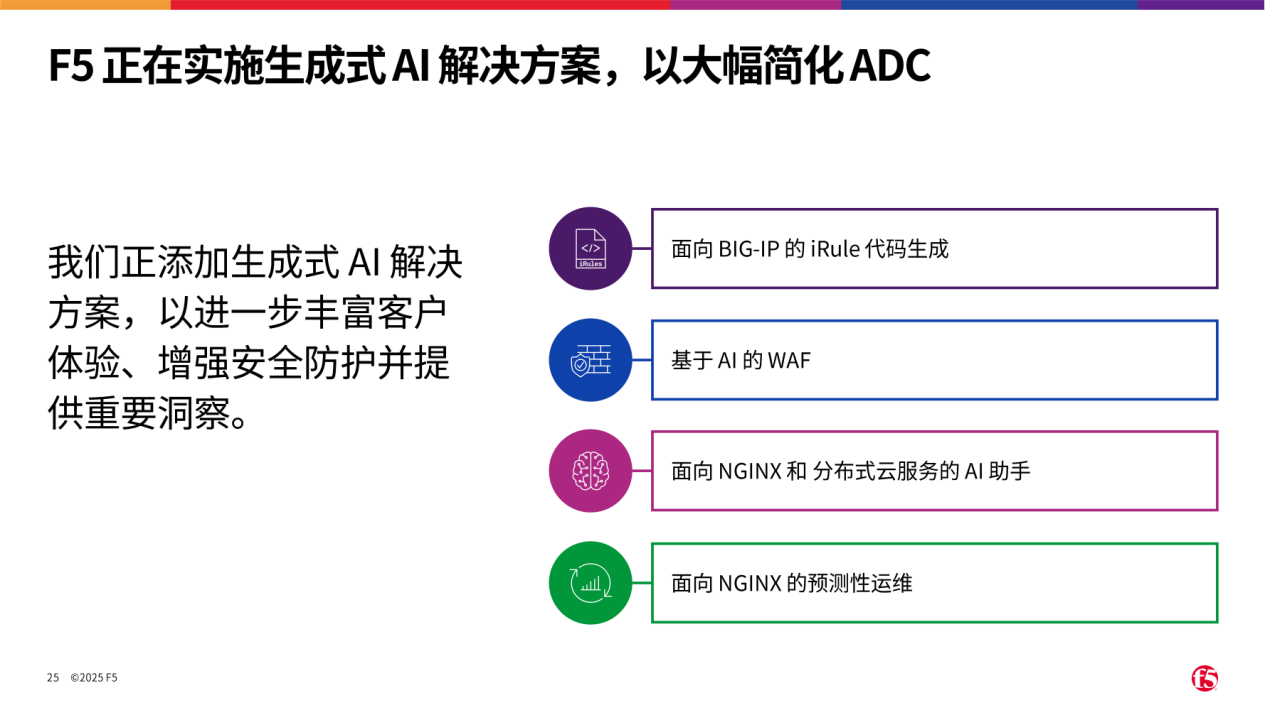
Secondly, F5 uses AI's powerful recognition and prediction capabilities to conduct in-depth analysis of attack methods and traffic changes. This allows it to accurately predict and dynamically adjust security protection strategies before an attack occurs, effectively avoiding the delay risks caused by traditional reliance on administrators' subjective judgment and manual strategy adjustment, and providing a solid guarantee for the safe and stable operation of ADC equipment.
At the ADC for AI level, F5 has launched six innovative solutions to fully enable the reasoning, training, and deployment processes of AI applications.
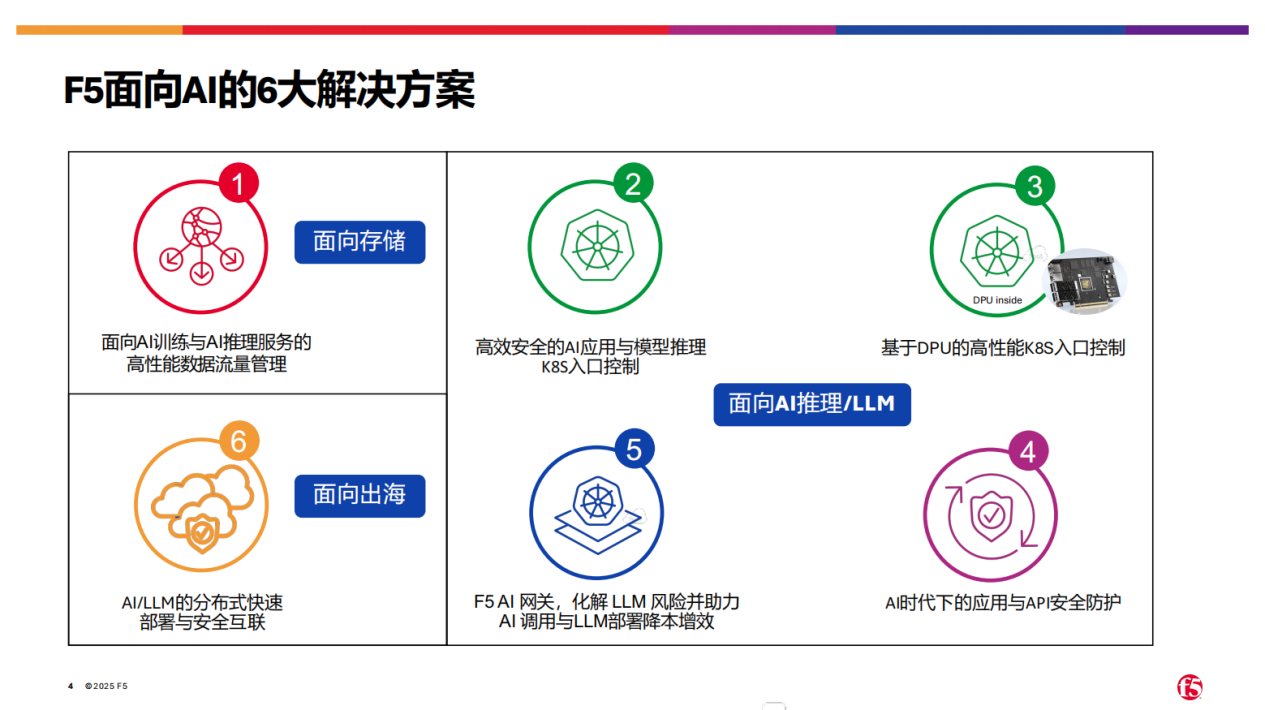
The first is a high-performance data traffic management solution. In response to the data transmission needs in high-traffic and high-concurrency scenarios, in-depth cooperation with industry-leading storage manufacturers ensures fast and stable data transmission, providing strong support for the smooth operation of AI applications.
The second is the container ingress control management solution. In response to the increasingly common container deployment trend of AI applications, F5's products can be deployed at the container ingress location to accurately identify and intelligently guide inbound and outbound traffic, ensuring that AI applications can efficiently access the best processing nodes and achieve optimal resource configuration.
The third is DPU smart network card integration. The DPU smart network card integration solution effectively relieves CPU pressure by offloading accelerated traffic to smart network card processing, releases more GPU computing resources, and further improves the operating efficiency of AI applications.
The fourth is the AI semantic gateway solution. The gateway can be deployed at the front end of different large models to perform in-depth analysis and intelligent routing of AI semantics and prompt words, ensuring that requests can be accurately assigned to the most suitable large model for processing, thereby greatly improving the response speed and intelligence level of AI applications. Secondly, for the security risks of large models, data privacy leakage and other risks, the AI gateway can effectively identify inbound and outbound traffic and data to ensure the security and reliability of AI calls.
The fifth is the full life cycle API security solution, which covers the entire chain of security protection from API code generation to deployment and access monitoring, providing an indestructible security barrier for AI applications.
The sixth is global rapid deployment and secure interconnection. In response to the special needs of Chinese companies going overseas, F5 also provides global rapid deployment and secure interconnection solutions, helping customers easily achieve global deployment of AI applications and data transmission security protection through the SaaS service platform.
Through the deep integration and two-way empowerment of AI and ADC, F5 not only demonstrates its profound foundation and technical strength in application delivery and security, but also provides solid and strong support and guarantee for enterprises' digital transformation in the AI era.
The practical value of ADC 3.0: Intelligent scheduling and global security dual-engine drive
In the actual implementation of AI applications, enterprise infrastructure often faces dual heterogeneous challenges: on the one hand, the diversity of large model ecosystems, the coexistence of different AI frameworks and algorithm platforms, and on the other hand, the coordination of multiple computing resources. This hybrid architecture environment places higher requirements on application delivery, requiring both intelligent scheduling to ensure business continuity and security protection to ensure system reliability.
In the process of selecting large models and building computing resources, F5 ADC 3.0 demonstrated its powerful ability as a unified entry point for AI applications. When a user makes a request, F5's ADC product deeply identifies and analyzes the request. On the one hand, it accurately evaluates the real-time status of background GPU resources and intelligently allocates user requests based on the computing load; on the other hand, through the AI gateway deployed at the front end of the large model, it can deeply understand the semantics and characteristics of user requests, accurately determine which large model is most suitable for processing the current request, and intelligently route it to the corresponding large model for processing. This not only significantly improves the response speed and processing efficiency of AI applications, but also achieves the optimal configuration and utilization of resources.
In terms of security protection, F5 has also demonstrated its outstanding capabilities and responsibilities. The AI gateway can not only route according to semantic needs, but also identify and resolve risks such as model vulnerabilities, black boxes and other unpredictability and various attacks, ensuring the security and reliability of AI calls. In addition, the WAAP protection solution provided by F5 has built an indestructible security line of defense. The solution covers multiple levels such as DDoS protection, BOT management, Web security and API security, and comprehensively covers various security threats that AI applications may face. Through real-time monitoring, intelligent analysis and rapid response, F5 can effectively resist external attacks, protect the security and privacy of customer data, avoid risks such as data leakage and large model theft, thereby ensuring the continuity and stability of corporate business and avoiding commercial losses and reputation damage caused by security incidents.
In the AI era, F5 ADC 3.0 is playing a vital role in the implementation of AI applications with its unique dual roles of "traffic commander" and "security guardian". As a "traffic commander", it accurately identifies and intelligently allocates traffic to ensure the efficient operation of AI applications and the optimal configuration of resources; as a "security guardian", it provides comprehensive protection and real-time monitoring, providing an indestructible guarantee for the data security and business continuity of enterprises. In the AI era, F5 ADC 3.0 is undoubtedly an indispensable assistant for enterprises on the road to digital transformation.
The key to the future of AI, let’s meet at Solution Day 2025
Artificial intelligence is reshaping the business ecosystem at an unprecedented speed, and intelligent applications have become the core asset for enterprises to win the future. F5 will launch the annual F5 Solution Day 2025 Shanghai Station event on May 22, 2025. At that time, F5 global and local technical experts will reveal the integration trend of AI and ADC 3.0, release localized innovation solutions and industry implementation paths, benchmark companies will share their transformation challenges and achievements, and partners will share their experience in accelerating the delivery of AI applications.
Register for F5 Solution Day 2025 Shanghai now and explore the infinite possibilities of application delivery in the AI era with global technology leaders!